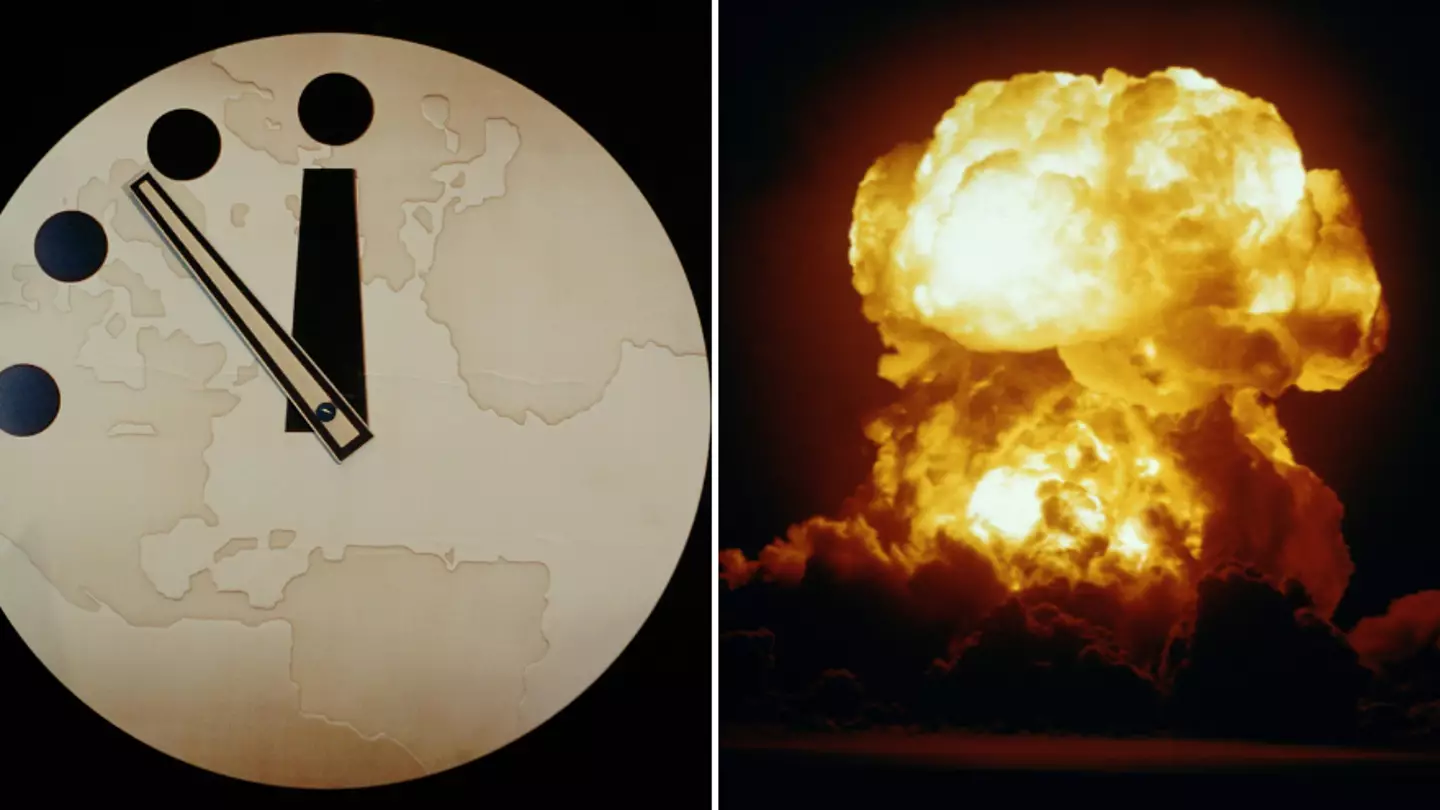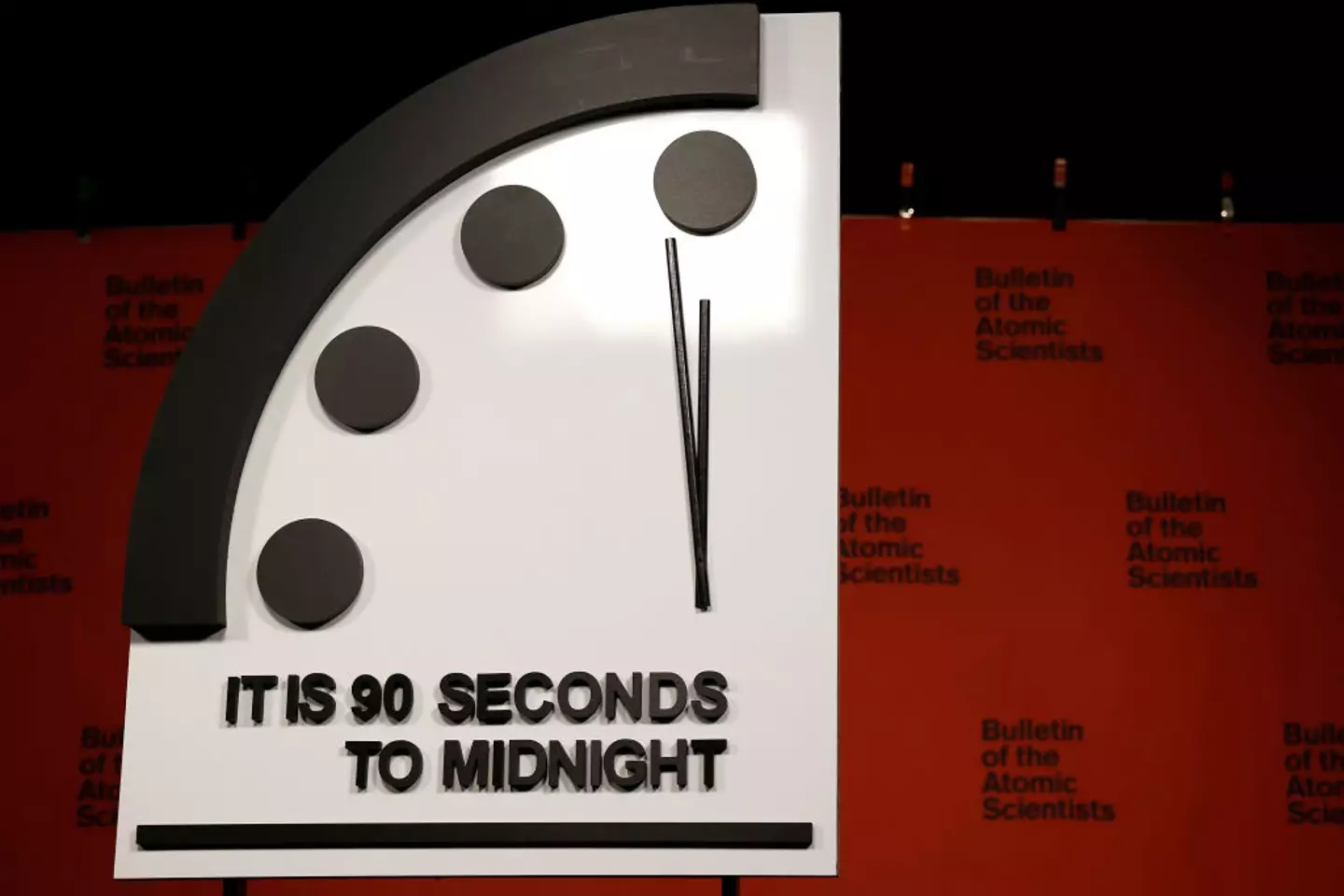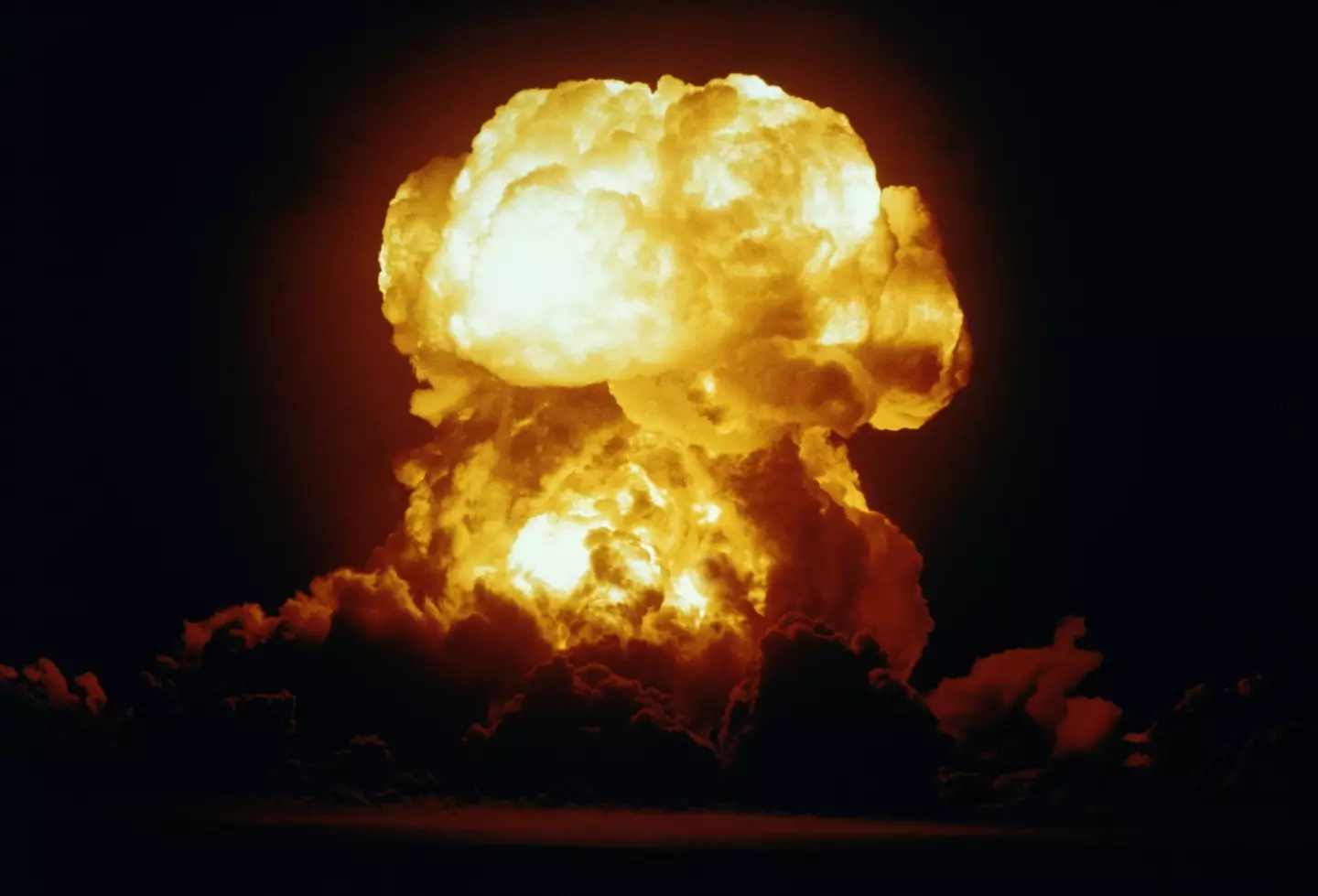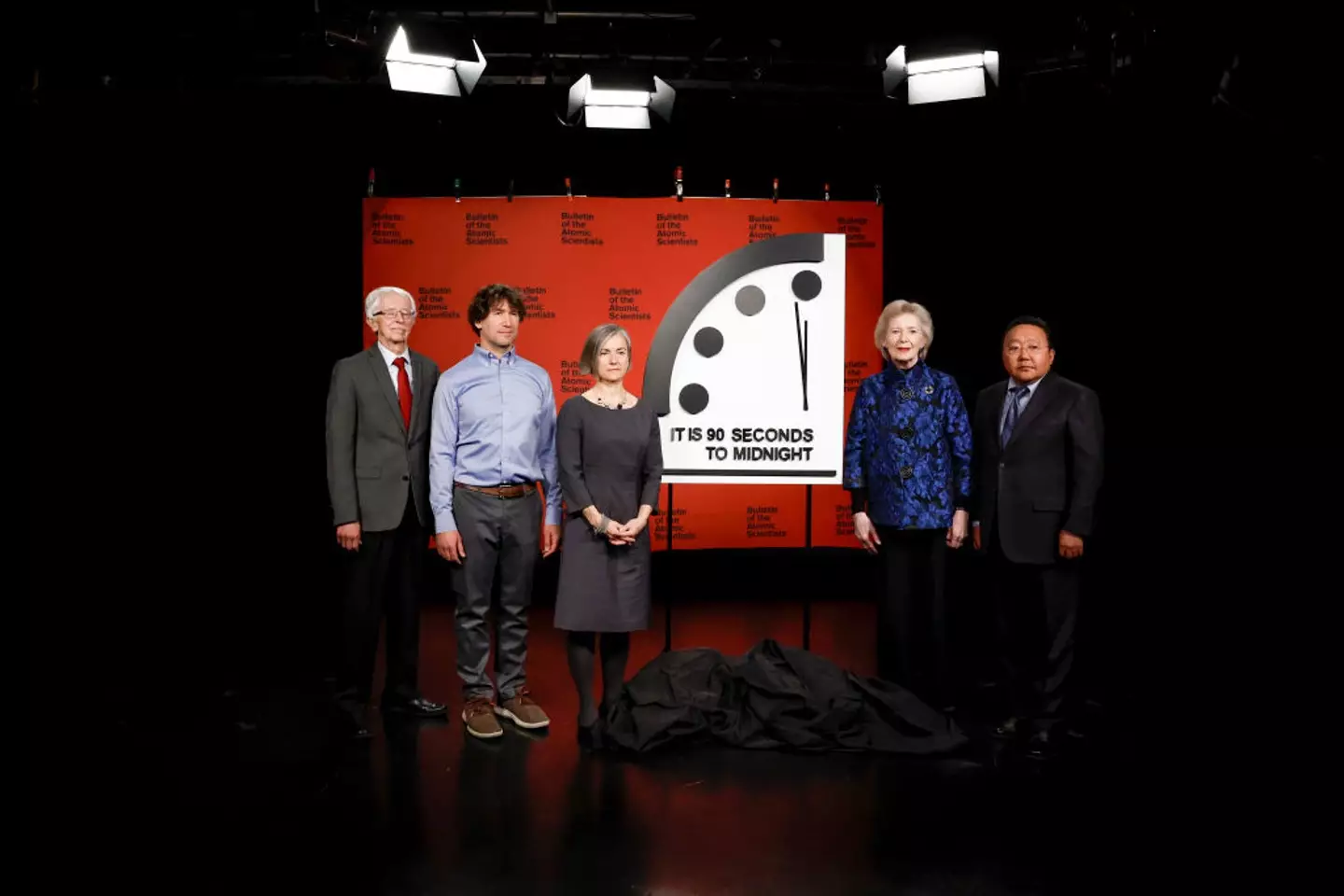
I'm sure many of us have been hearing lots about the Doomsday Clock and left fearful over what on earth will happen when it finally hits midnight.
It is now just a matter of hours away from being set for 2024, while the clock currently stands at the closest to midnight it's ever been, with scientists giving a huge update on it later today (23 January) with scientist Bill Nye set to join the team for the announcement this year.
For those not in the know of the phenomenon, the Doomsday Clock is designed to show just how close humanity is to global catastrophe caused by man-made technologies.

Advert
In short, the clock is intended to serve as a call to action for world governments and at the moment, the clock is currently the closest it's ever been to midnight - AKA Doomsday - at a mere 90 seconds away from disaster.
Previously, it sat at the previous record of 100 seconds to midnight for two years.
So, in order to work out the update, The Bulletin of the Atomic Scientists - who set up the clock - ask is humanity safer or at greater risk this year compared to last year, and is humanity at a greater risk than in the past 75 years?
If they believe the answer is yes then the clock has to move.
Advert
According to The Bulletin of the Atomic Scientists, the Doomsday Clock was set at 90 seconds to midnight.
This was 'due largely but not exclusively to Russia’s invasion of Ukraine and the increased risk of nuclear escalation'.

"The new Clock time was also influenced by continuing threats posed by the climate crisis and the breakdown of global norms and institutions needed to mitigate risks associated with advancing technologies and biological threats such as COVID-19," a press release from the The Bulletin of the Atomic Scientists explains.
Advert
Rachel Bronson, PhD, president and CEO, Bulletin of the Atomic Scientists, added: "We are living in a time of unprecedented danger, and the Doomsday Clock time reflects that reality.
"90 seconds to midnight is the closest the Clock has ever been set to midnight, and it’s a decision our experts do not take lightly.
"The US government, its NATO allies and Ukraine have a multitude of channels for dialogue; we urge leaders to explore all of them to their fullest ability to turn back the Clock."
According to Mary Robinson, the Chair of The Elders and former UN High Commissioner for Human Rights, the Doomsday Clock is 'sounding an alarm for the whole of humanity'.
Advert

"We are on the brink of a precipice," she stressed. "But our leaders are not acting at sufficient speed or scale to secure a peaceful and liveable planet.
"From cutting carbon emissions to strengthening arms control treaties and investing in pandemic preparedness, we know what needs to be done. The science is clear, but the political will is lacking.
"This must change in 2023 if we are to avert catastrophe. We are facing multiple, existential crises. Leaders need a crisis mindset.”
Advert
If it does ever strike midnight on the Doomsday Clock, this means mass extinction for humans.
"When the clock is at midnight, that means there's been some sort of nuclear exchange or catastrophic climate change that's wiped out humanity," Bronson previously said.
"We never really want to get there and we won't know it when we do."
Topics: Environment, Life, News, Science, Technology